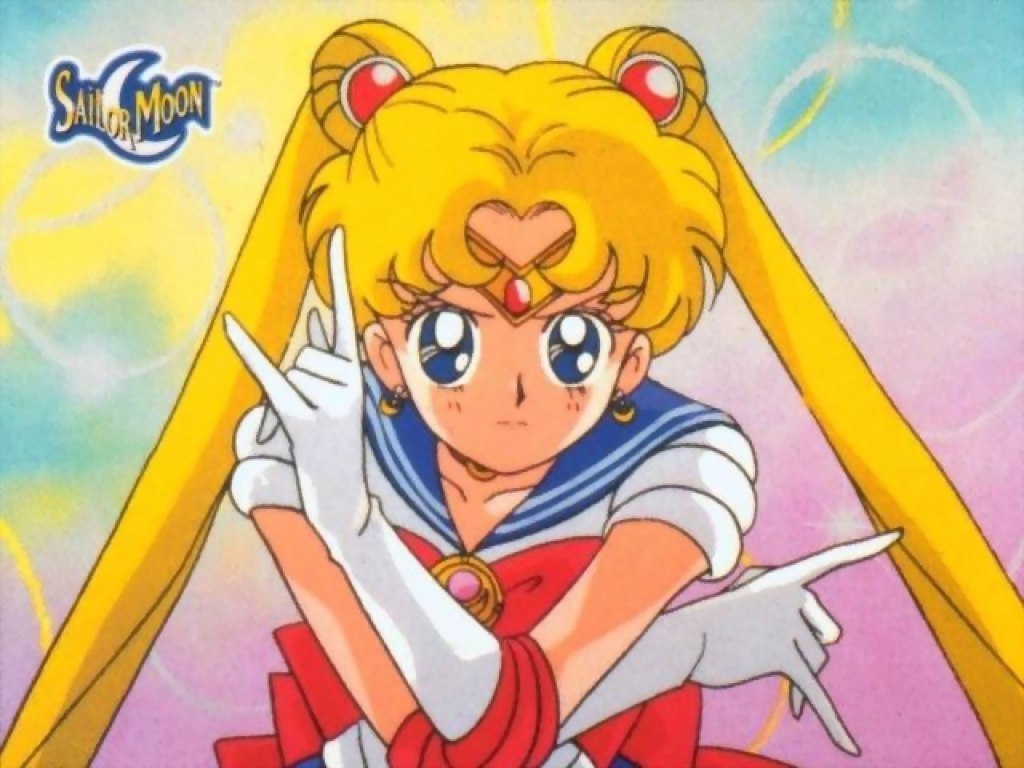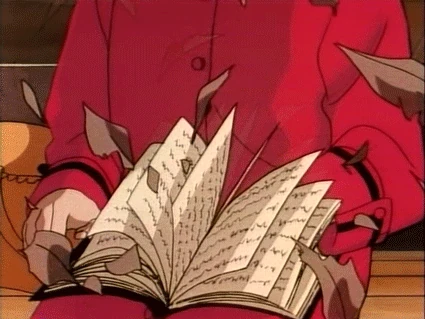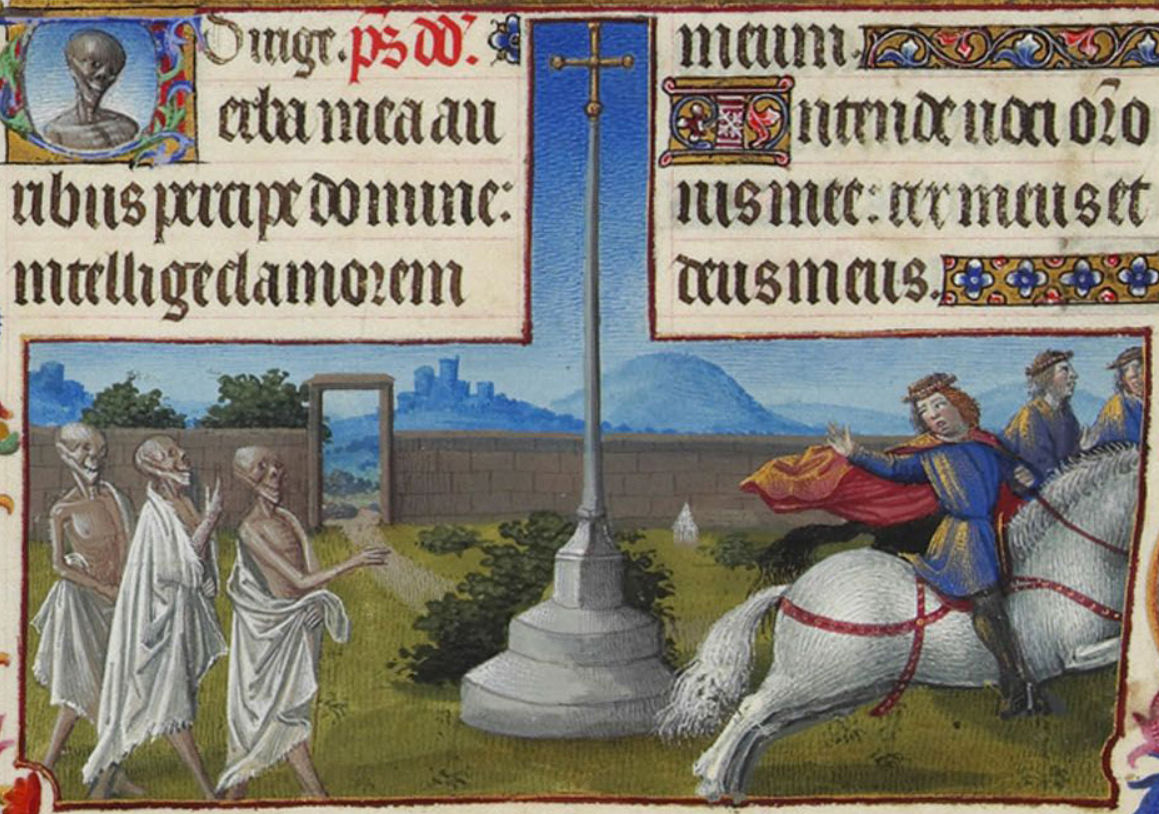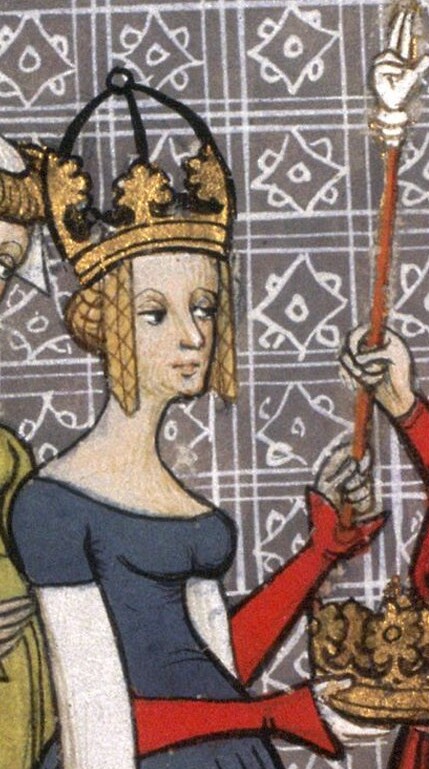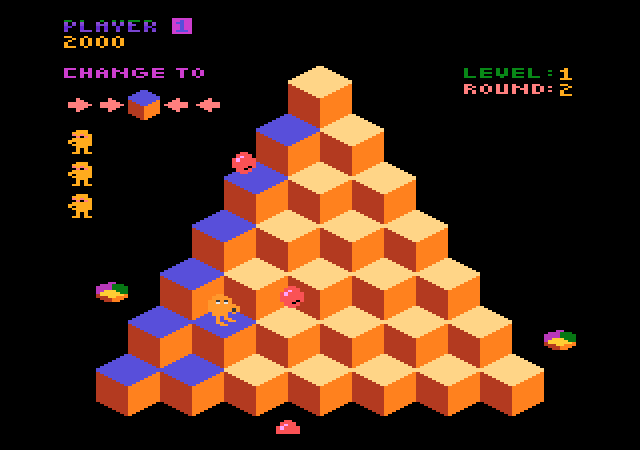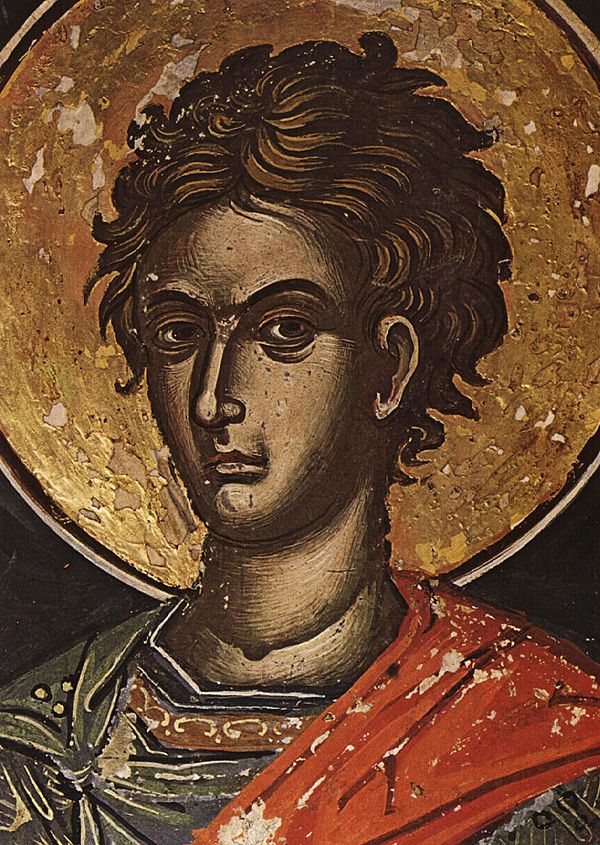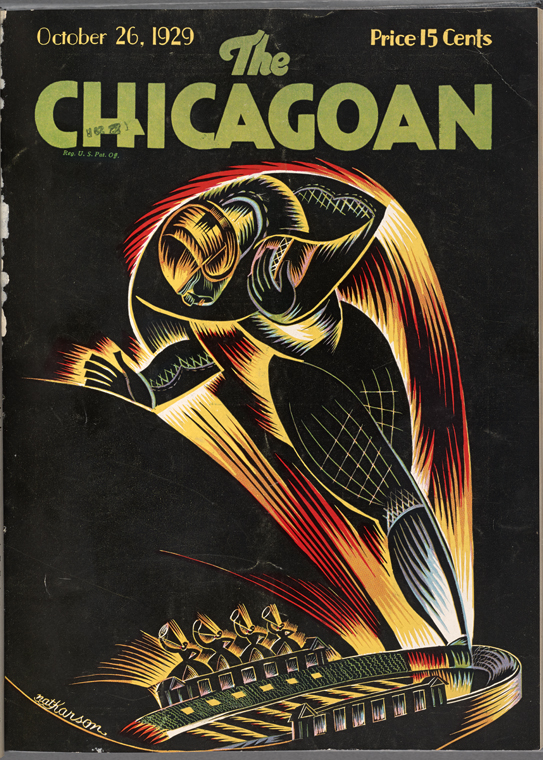Timeless Ancient Art
Introduction
When done well, art evokes emotions and aesthetics which transcend time.
Sometimes there's an almost otherworldly feeling seeing impressive art styles from the past—especially when we can see certain parallels with contemporary art. Sometimes this causes an uncanny valley feeling, because we are unfamiliar with the stylization, milieu, and commonplace motifs in ancient art.
I forget what it's called, but I believe in the world of art and sociology there are some fancy theoretical constructs about how our familiarity and expectations for a genre or style shape our relationship with art.
Uncanny Valley
For example, consider the way that faces were sometimes represented in Sumerian art.
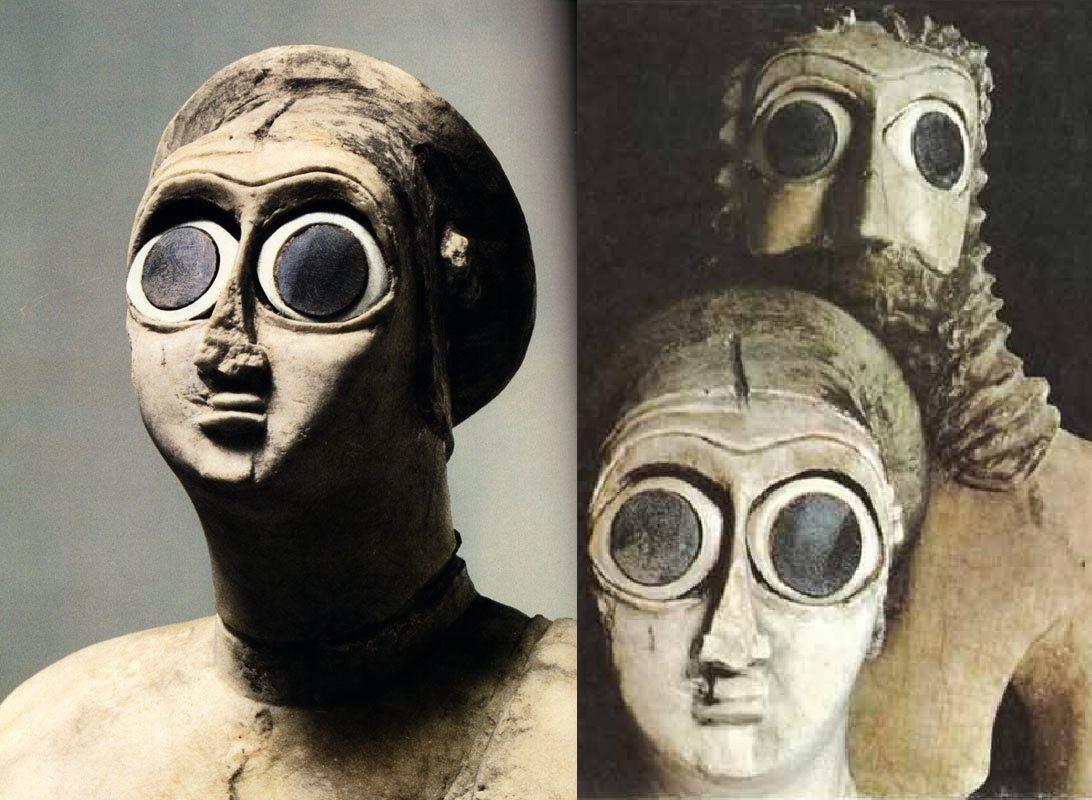
Sumerian statues from the Tell Asmar Hoard (2900 BC–2350 BC).
Bizarre, right?
Well, maybe not.
Japanese-style cartoons don't look bizarre to us because they are familiar. We understand that they are meant to be highly-stylized entertainment. They aren't supposed to look realistic. But what about the Sumerian works? What was going through the artists' minds? How did ancient people feel when they saw these? Did they think they were goofy and ridiculous—the equivalent of an ancient caricature?
500+ years from now, people will likely be just as perplexed by Japanese-style cartoons from the 1960s-present. The styles familiar to us today will undoubtedly change beyond recognition by the end of the century, and be forgotten by most of the populace eventually.
Already, some styles give me a bizarre uncanny valley feeling:
Timeless Familiarity
Sometimes uncanny valley goes the other way. Instead of looking utterly alien, something looks remarkably familiar.
The following illustration reminds me of a 2D video game dialog screen. The zombie character, with its dramatic icon in the top-left corner, is giving us some kind of ominous monologue. Even the theme of zombies makes it timely. (I'm tired of the oversaturation of zombie stuff everywhere).
The full panel isn't as perfect, but maybe we can imagine it as a larger menu select screen.
This looks like some kind of cartoon character that could be drawn today. The half-closed eyes, the slouch, the white sleeves that look like arms hanging limp at her side.
The full panel isn't as moody, but the flat colors with the black outlines is reminiscent of modern cartoons.
Starting in the 400s, several Christian ascetics decided to spend the rest of their lives living on top of tall pillars. They were called stylites.
It almost sounds kind of fun. But try that these days you'd get diagnosed with severe autism, given some kind of mood stabilizer drug, and told you need to pay rent.
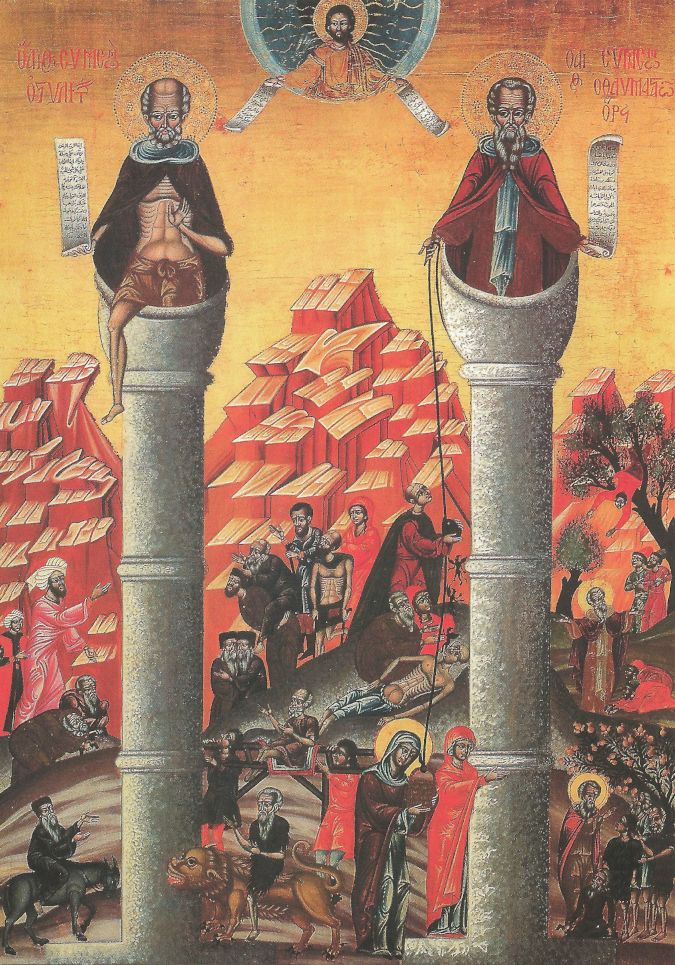
Simeon Stylites (circa 390-459) and Simeon Stylites the Younger (circa 521-597), depicted in a 1699 painting.
The cliffs in the background remind me of the video game Q*bert.
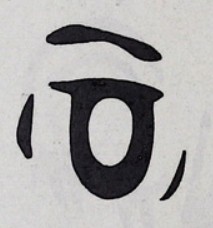
This Armenian rock carving looks like a cartoon eye.

I'm sure you can find an example that looks much closer, but the generic Wikipedia image will suffice for now.
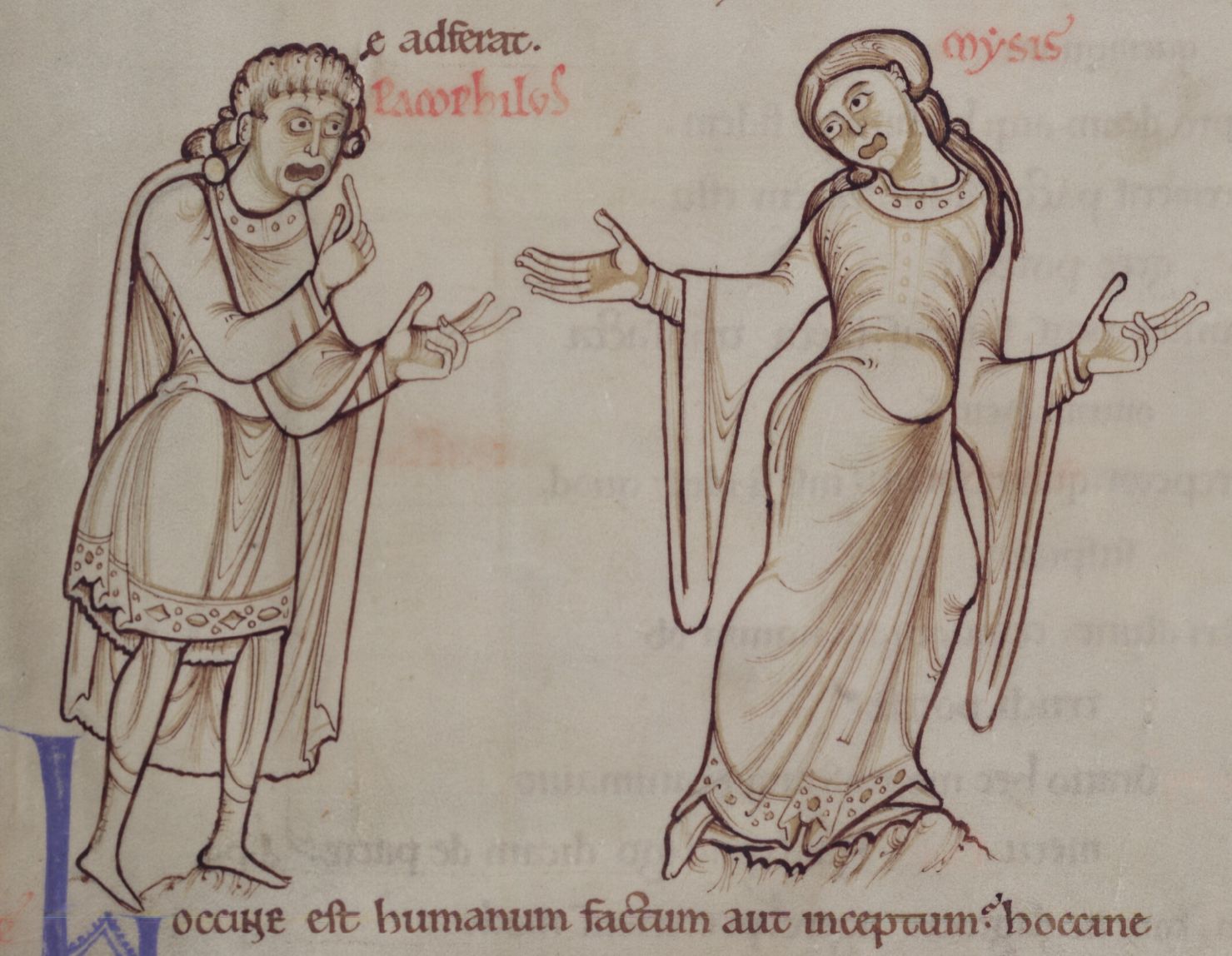
Illustration from a medieval copy of the Comedies of Terence (circa 1150 AD). Bodleian Library MS. Auct. F. 2. 13.
The mouths look like some goofy Rick and Morty characters yelling at each other.
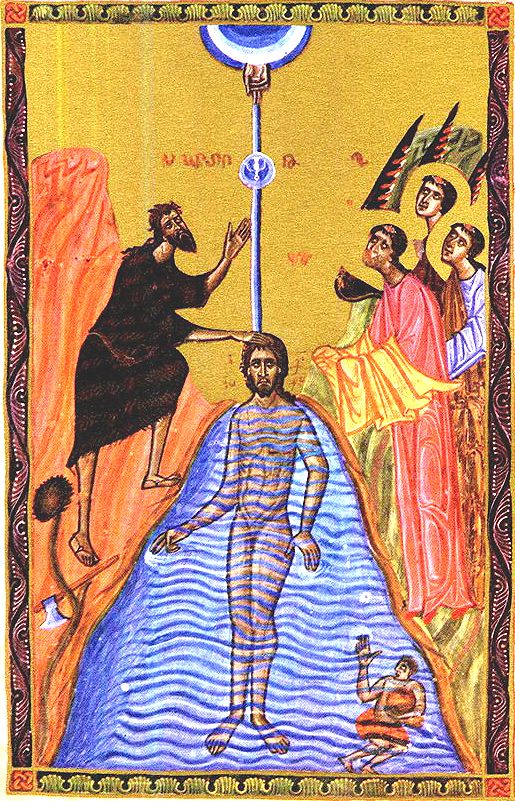
Jesus being baptized, portrayed in the Gospel of Skewra (1193).
The way the water is drawn in those transparent bands reminds me of the water in the video game Sonic 2.
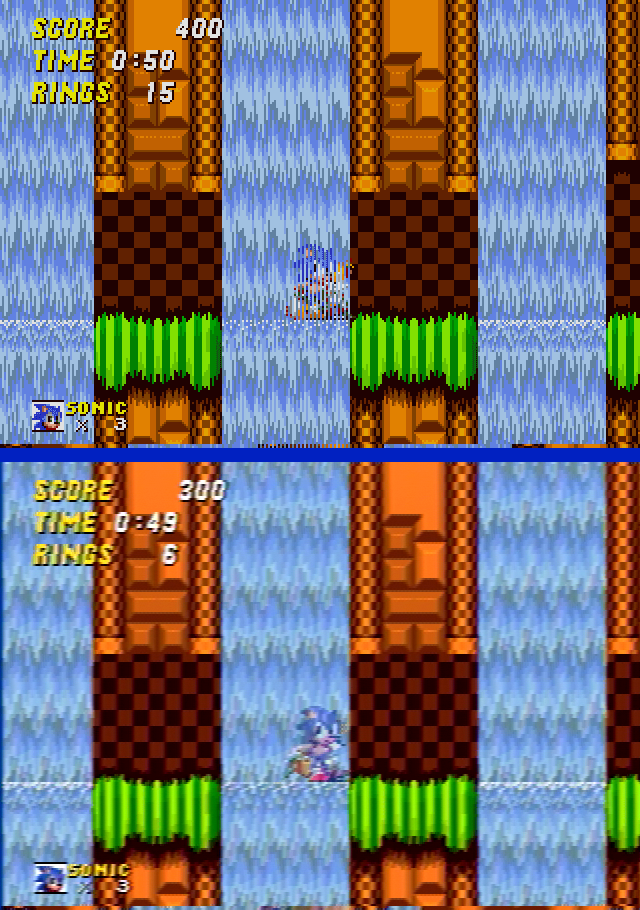
Screenshots of Sonic the Hedgehog 2 (1992) taken in RGB and NTSC composite video, by the blog Nerdly Pleasures. Note the cool transparent blending effect on a monitor not using a perfect RGB pixel display.
The Coolness Factor
Sometimes the art just looks cool.
To give an oversimplification, one of the major currents in Western art in the 1800s was focused on achieving a high degree of realisticness. Once this was achieved and became formulaic and boring, artists at the beginning of the 1900s tried to flip art on its head by exploring intellectual and philosophical themes such as, what does "art" really mean? Various schools made styles which were intentionally unrealistic, ugly, inharmonious, and strange in order to push the limits of visual media.
Not all experiments with new styles were ugly, but I think society is finally learning the lesson that art is more effective at expressing ideas and emotions when the style is pleasing and complements the story being told. Art is more effective when it's intuitive, rather than some absurdist exercise in intellectualism.
As a reaction against the apparent meaninglessness of "modern art," many believe that the realism of Western art from the late 1800s is what art is "supposed" to be.
This, too, misses the mark. Prior to this fixation on achieving realisticness, art throughout the world has always had various styles. Psychedelic, colorful, flat, abstract, geometric, dreamy, and everything in between.
How dramatic. The lighting of the face; the expression of the eyes, eyebrows, and mouth; the hair.
According to legend, Nestor defeated the anti-Christian gladiator Lyaeus. Anti-Christian Emperor Galerius then condemned Nestor to be executed with his own sword.
We can see a resolute and almost smug defiance in Nestor's face, inspiring us to remain strong even against the most imposing obstacles and threats. I can only hope future generations imagine me to be that cool after I'm executed by the establishment in Minecraft.
The value gradient created by the brush strokes (most visible in the neck if you zoom in) reminds me of whatever style this is:
I recall seeing a lot of early digital clip arts with that line style as well.
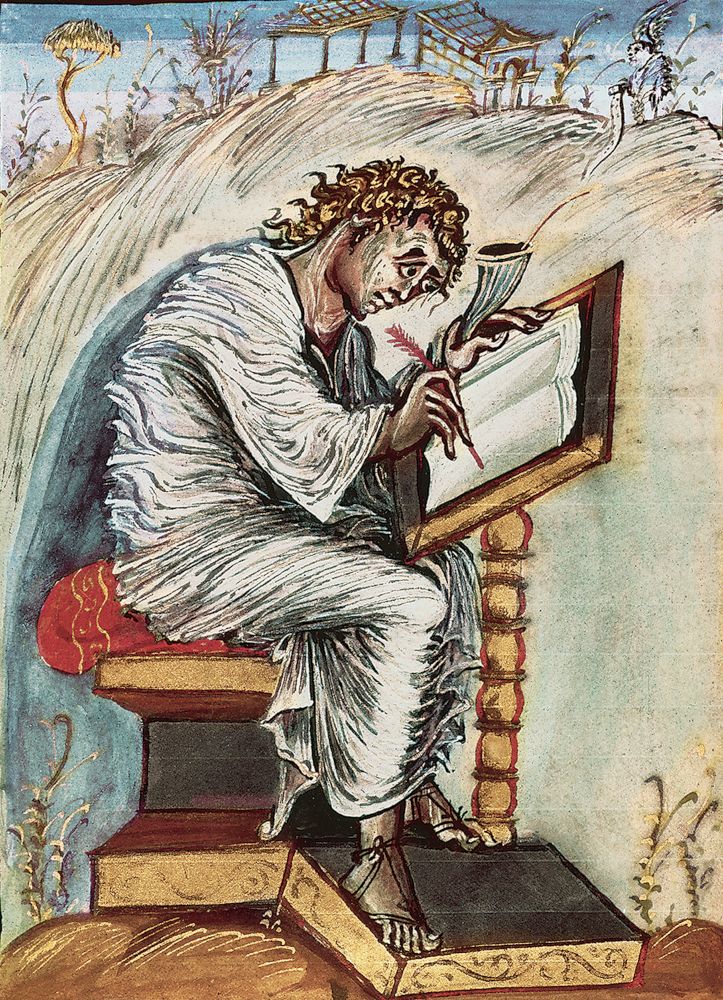
Matthew the Apostle writing a manuscript. Ebbo Gospels (circa 816-835).
The wavy lines give a sense of tumult and dynamicism. We can imagine divine winds sweep around him as he frantically writes.
This looks like some kind of trippy album cover.
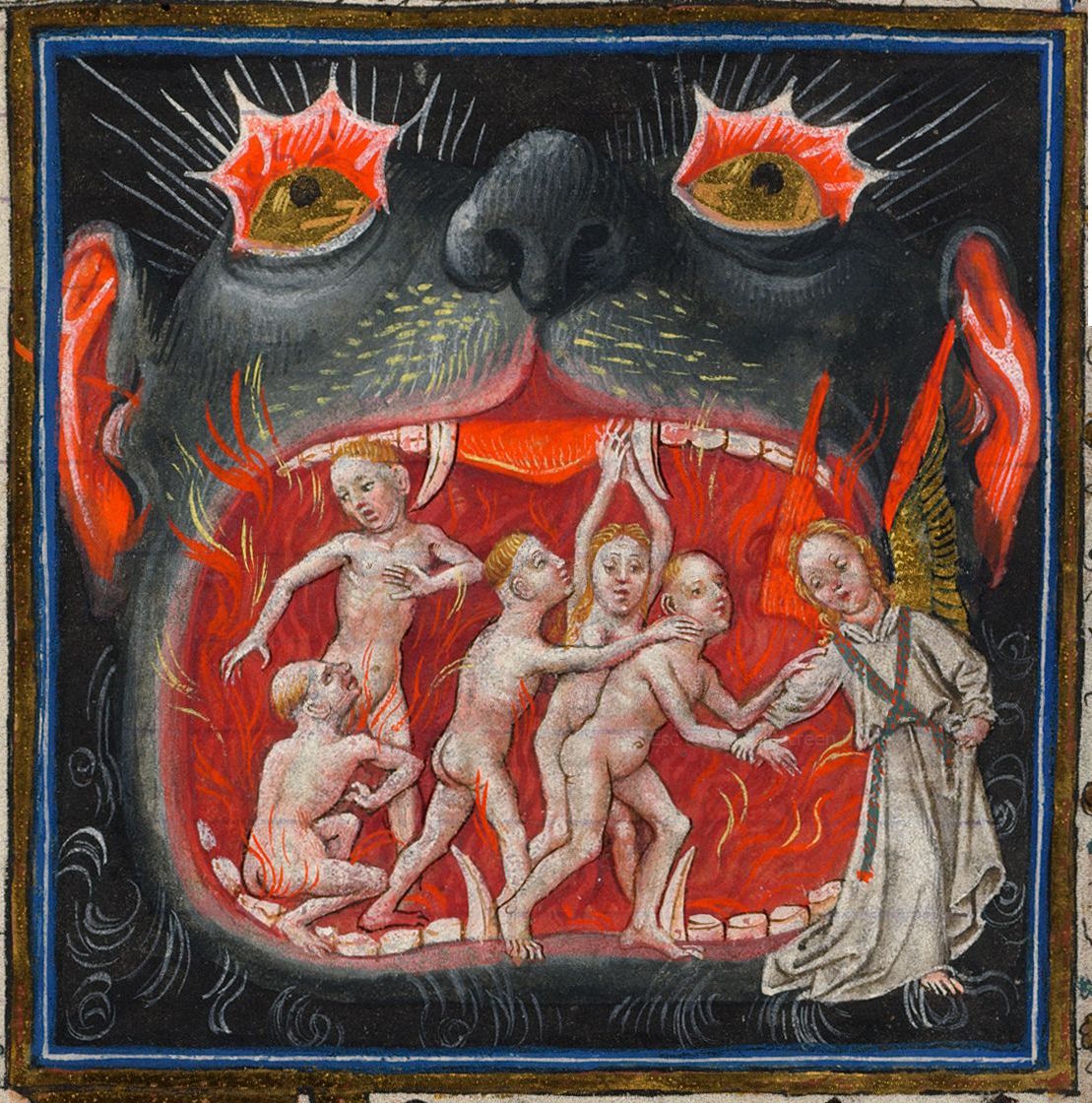
Panel from the Hours of Catherine of Cleves (circa 1440).
Who said Medieval art was boring?
Conclusion
If you know of anything else worth sharing here, leave me a note.
